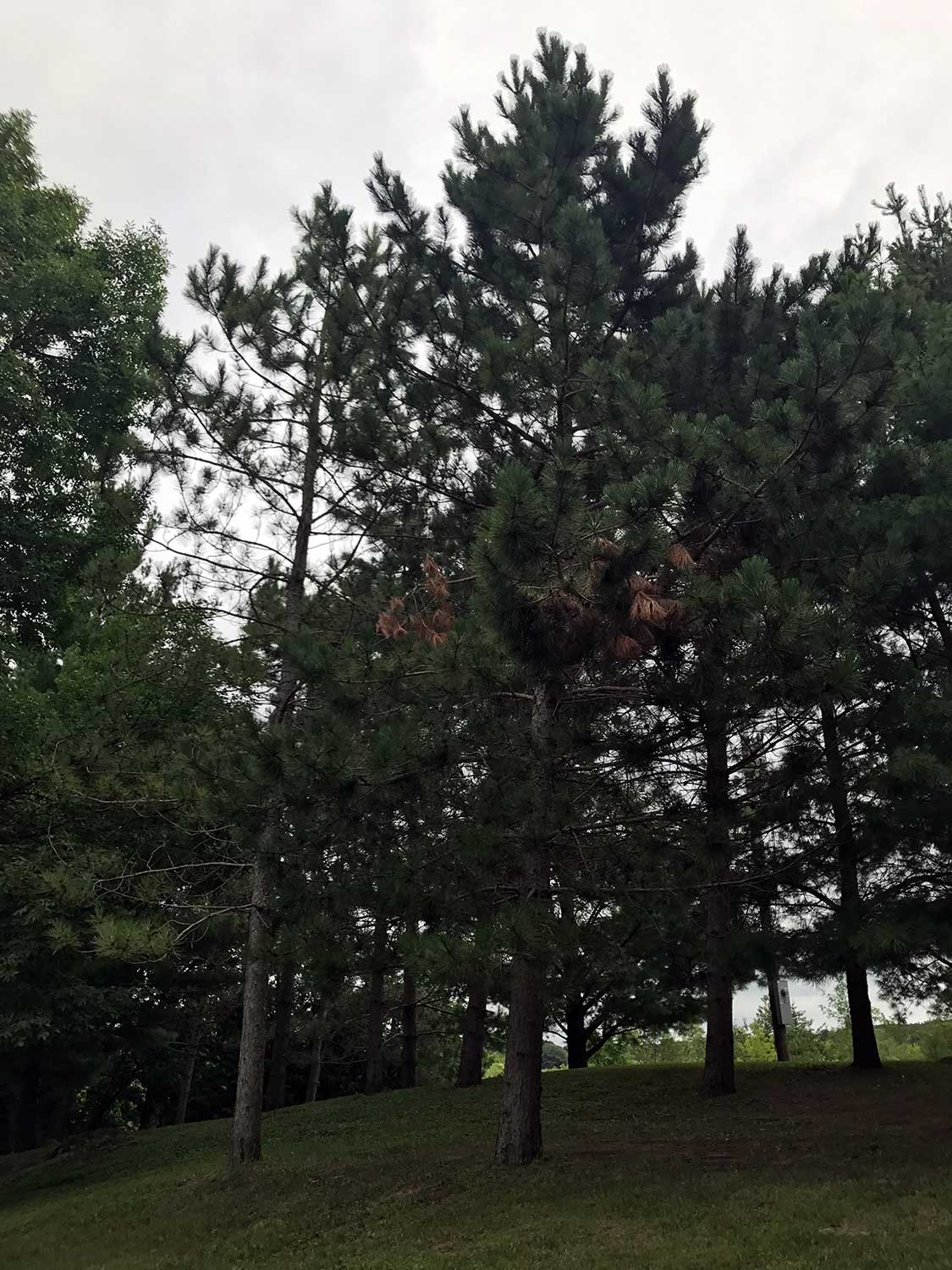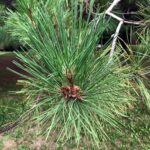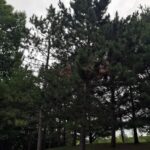Native To State: YES
Naturally Occurring: NO
Description
Pinus resinosa (Red Pine) is a tall evergreen coniferous tree belonging to the Pinaceae family. Here are some key identification characteristics:
Size and Shape: Red pine is a large tree that typically reaches heights of 66 to 115 feet (20 to 35 meters). It has a straight, tall trunk with a relatively uniform crown and branches that spread horizontally.
Needles: The needles of Pinus resinosa are needle-like and occur in bundles of two. Each needle is about 4 to 6 inches (10 to 15 centimeters) long, and they have a reddish-brown to dark green color.
Cones: The tree produces large and distinctive cones that measure around 2.5 to 4 inches (6 to 10 centimeters) long. The cones have a conical shape and are reddish-brown when mature. The scales of the cones are tipped with small, curved prickles.
Bark: The bark of young red pine trees is smooth and grayish, often becoming reddish-brown and developing thick, scaly plates as the tree matures.
Branches and Twigs: The branches of red pine are relatively stout, and the twigs are often covered with a thin, white, waxy coating.
Habitat: Red pine is native to North America and can be found in various habitats, including sandy soils and rocky areas. It is often associated with mixed forests and grows well in cooler climates.
Cultivation: Due to its rapid growth and straight trunk, red pine has been widely planted for reforestation and timber production. It is an important commercial timber species.
Other Species: Red pine is relatively easy to identify due to its long needles in bundles of two and unique reddish-brown cones.
Red pine is valued for its timber, which is used in construction, furniture making, and various other applications. It is also planted in reforestation efforts to restore forests and provide valuable wood resources.
Occurrence
Many planted in a 3 acre area in 1987 and 1988. Trees at that time were also planted in the north west corner of the property and in the yard and in some places in the former pasture.



